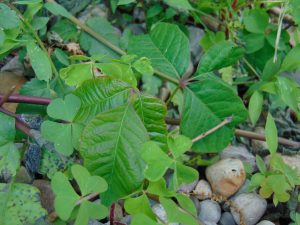From the time I could understand words to the time I left home it was drilled into my head to wear sunscreen. My mother would constantly say things like this as I was headed out the door somewhere: “Did you put on sunscreen?” “Do you have a hat?” “I know it’s hot, but you should wear long sleeves.” What would I say? “Yes mom. I know.”
You see, my mother was a stickler about protecting my skin because she was diagnosed with melanoma when she was 30. She knew the worry and pain associated with being told she had skin cancer and she didn’t want that to happen to me. Moms will be moms right? Well, over the years her words really sunk in and would echo in my head, especially when I look in the mirror and find little freckles on my checks, forehead, and ears that weren’t there last year. Now that I am a mother, I find her words coming out of my mouth. “Make sure you put sunscreen on Beth.” “Does she have a hat?” “Make sure you put the umbrella up on her stroller.”
I am not a doctor. I have no association with healthcare or skin products. I am an agriculturalist. That is what keeps me alert about the dangers of sun exposure. Many of us spend our time working outside in the middle of the day when the sun is most intense. Sometimes it is unavoidable. Sometimes we can’t follow all the doctor’s recommendations for sun safety, but we should try our best. Why? Because skin cancer is the most common type of cancer there is and it can be prevented.
Check out this information published by OSU Extension from Dr. S. Dee Jepsen, Associate Professor and State Safety Leader, Agricultural Safety and Health, Food, Agricultural and Biological Engineering and Jeffery Suchy, Graduate Student and Lecturer, Food, Agricultural and Biological Engineering about sun exposure and protecting your skin:
Sun Exposure (Protect Your Skin)
Gardeners work long hours, often outside in the sun during peak exposure hours. Repeated exposure to the sun can cause skin damage and certain cancers. Skin damage can include dark spots, irregular pigmentation and wrinkles. Long-term exposure and repeated damage can lead to melanoma, a dangerous form of skin cancer. Damage typically occurs through progressive exposure over several years. Limiting exposure, dressing appropriately and applying sunscreen can reduce the chances of skin damage and disease.
Gardeners should take greater precautions against sun exposure if they:
- Have a history of skin cancers.
- Have a lot of freckles or moles.
- Burn easily or have a fair complexion.
- Have blonde or red hair.
- Have blue, green or gray eyes.
A common misconception is that people with darker complexions are not at risk for skin cancers because they do not easily sunburn. While it is true that people with darker complexions are more naturally protected (melanin blocks UV rays) from damage than those with lighter complexions, everyone can experience skin damage from prolonged exposure. Prolonged exposure and repeated damage can lead to certain forms of skin cancer and, if left unchecked, can be deadly.
Facts About UV Rays
Although they affect the skin in different ways, both UVA and UVB rays have been linked to skin cancer.
Watching for Skin Cancer
Check any skin spot that spontaneously bleeds, changes color, or changes size. For anyone working outside in the sun, it is important to check the skin on a regular basis for visible signs of skin cancer. Look for these physical signs:
- Asymmetrical spots.
- Irregular borders.
- Color variations.
- Diameters bigger than the end of a pencil eraser.
For answers to questions about the possibility of skin cancer, consult a doctor.
In order to minimize the risk of skin damage or cancer, follow these basic recommendations:
- Stay in the shade and avoid sun exposure between 10 am and 3 pm.
- Schedule outdoor work for early mornings or later in the afternoon.
- When operating a mower or other unprotected vehicle, consider adding a shade canopy to the driver’s seat.
- Put up a collapsible tent if working outside in one location for an extended period of time.
- If possible, perform equipment repairs and maintenance in a workshop rather than outside.
To conclude this article inspired by my mother, Mom you are right. Thanks for annoying me about sun safety. I will pass on the legacy to my daughter too. I hope you readers will do the same. Remember to love your life and love your body. It’s hard to have one without the other.






